ENGINE FAILURE



In the last issue of Offshore magazine we had a focus on watersports rising in popularity – SUP and open-water swimming. This issue, we hope you’ll find plenty to whet your appetite for boating. Did you know that the number one reason for call outs to boats is equipment and machinery failure? Well we’ve got you covered on page 4, with a closer look at some common issues. You’ll find useful tips for your autumn sailing preparations on page 14, a dinghy rescue on page 11 and some insider insights for visitors to Cromer on page 8.
We’ve also got something for those among you with four-legged familiars. In 2022 there were 77 launches to animals. And a common scenario is a dog unexpectedly going over a cliff or wall. Turn to page 16 to consider the options available to you in the event of this alarming situation.
Wishing you safe and happy sailing this autumn.
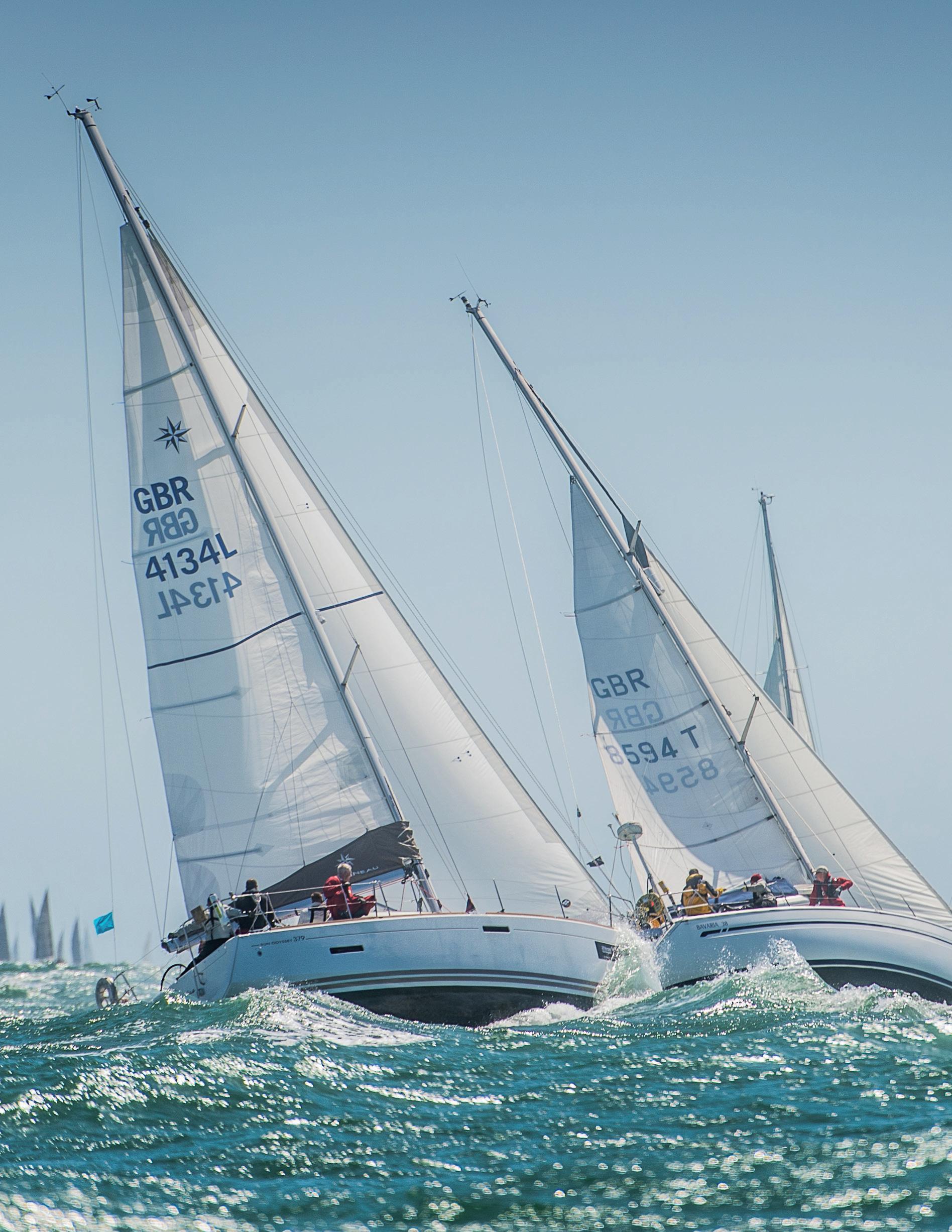
Email: offshore@rnli.org.uk
2023
©RNLI 2023. All rights reserved. Reproduction is permitted with the prior consent of the RNLI. Opinions expressed by authors are not necessarily those of the publishers. Care is taken to ensure that editorial information is correct at the time of going to press but is subject to change.
Chair:
Janet Legrand KC (Hon)
Chief Executive:
Mark Dowie
Offshore Editor: Anna Burn

Offshore Design:
Andy Perryman
If you have any enquiries – or would prefer not to receive this magazine – please email supporterexperience@rnli.org.uk.
Alternatively, please call 0300 300 9990 (from the UK), 01 511 9836 (from Ireland) or +44 1202 663234 (from any other country) weekdays 8am–6pm, or post c/o RNLI Support Centre, West Quay Road, Poole, Dorset, BH15 1HZ.
The Royal National Lifeboat Institution, a charity registered in England and Wales (209603), Scotland (SC037736), the Republic of Ireland (CHY 2678 and 20003326), the Bailiwick of Jersey (14), the Isle of Man (1308 and 006329F), the Bailiwick of Guernsey and Alderney
SOL SLIM RESCUE HOWLER
WHISTLE (PACK OF 2)

Unlike traditional pea-based whistles, the SOL Howler Whistle is pea-less – providing ultimate reliability when you need it most. With a 100dB range, it’ll help you get the attention of rescuers over a distance.

Front cover photograph: RNLI/Andy Parish
(J23557305)
RRP £7
Ref: RS2336902
Photo: RNLI/Andrew ParishCelebrate 200 years of saving lives at sea with your RNLI family by organising, or joining, a fundraising sailing event. Cruiser Racer and Qualified Yachtmaster Kate Parker shares her plans for 2024.

'A sailing fundraiser is a fantastic way to raise money in support of the RNLI and encourage engagement with your club, your sport and with the RNLI too. Their website has excellent resources to inspire you and help you make the most of your event.'
RNLI AREA LIFESAVING MANAGER AND RYA SAILING TRAINER/ EXAMINER
Andy is a keen cruising sailor and a trainer/ inspector/examiner for the RYA, and has sailed extensively in the seas around Europe.

CRUISER RACER AND COASTAL YACHT MASTER
Kate is passionate about inshore and offshore racing. Professionally, as a barrister, she specialises in trusts and charity law.

'I’m part of the Wales panel for the RNLI’s bicentenary, and we are looking to organise inshore and offshore yacht racing events next year. Working alongside water safety teams, we hope to help inspire a new generation of lifesavers and supporters.’
RISK:
FUN FACTOR:
COST:
Register your event at RNLI.org/2024
TRAINEE CREW MEMBER, CROMER RNLI
Fiona is a coastal engineer and a lifeboat volunteer at Cromer RNLI, where she is currently training on the station’s inshore lifeboat.
VOLUNTEER CREW MEMBER, KINGHORN RNLI
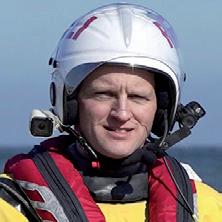
As well as a volunteer helm, Neil is the lifeboat press officer at Kinghorn RNLI. In his day job, he is an environmental scientist specialising in contaminated land.
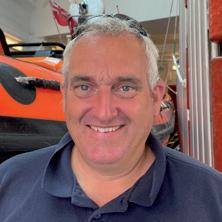
SHOP.RNLI.ORG
VICTORINOX RESCUE
POCKET KNIFE
Designed for both left-hand and right-hand users, the Rescue Pocket Knife is the essential accessory for every adventure. With 13 tools, including a seatbelt cutter, window breaker and shatterproof glass saw.

RRP: £103
Ref: RS2333708
Ships to UK, Channel Islands and Isle of Man only
LIFESYSTEMS WATERPROOF FIRST AID KIT
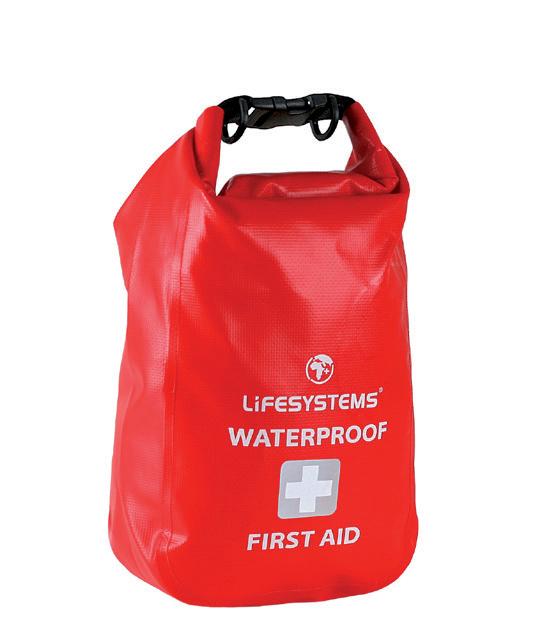

Made from tough, waterproof material, this Lifesystems first aid kit contains equipment for injuries typically sustained from watersports, as well as general outdoor activities. Ideal for paddling expeditions.
RRP £35
Ref: RS2236407 (UK)
RS2236408 (EU)

' It doesn't have to be racing –there are a wide variety of sailing events to choose from. Whatever you decide to do, get out on the water, have fun, and you’ll help to save lives at sea’
It’s not the kind of thing they make movies about. But machinery failure in motorboats is the most common cause of lifeboat call outs –and problems like loss of engine power can lead to some serious situations. So it’s important to take good care of your engine, and to have a plan for when things do go wrong

Marine engines have three separate systems that need to work together to keep you running – diesel, water and air. It can help to think of these systems as being a bit like those in the human body. Our circulatory, digestive and respiratory systems are separate but interdependent, and for overall health we take care of all three.
RNLI Area Lifesaving Manager Andy Wright covers popular boating areas in Cornwall and along the Bristol Channel, and he’s an experienced skipper of large sail training yachts, including his own much-loved 36-footer. Here’s his advice on how to keep your engine’s systems healthy, and tips to prevent a small niggle from becoming an emergency.

‘Your standard diesel engine has a fresh water system and a sea water or raw water system,’ Andy says. ‘The sea water is pulled in to cool the fresh water. So a common problem is a blockage in the strainer, where something like seaweed is sucked in too, stopping the flow of cool water into the engine, and leading to overheating.
‘Your engine should have an alarm if it overheats, and you’ll get a horrible, burning smell. So turn the engine off, check the strainer and clear any blockages.
‘If you’ve overheated and your strainer is clear, the next thing to check is your impeller pump. This is what pulls in your raw water, and if any of its blades are broken it will lose suction, and not draw in enough cold water to cool the engine. We recommend changing the impeller annually to prevent this, and also carrying a few spares onboard – it’s easily replaced if it does break.’
Two common problems in marine diesel systems are water contamination and shifting sediment.

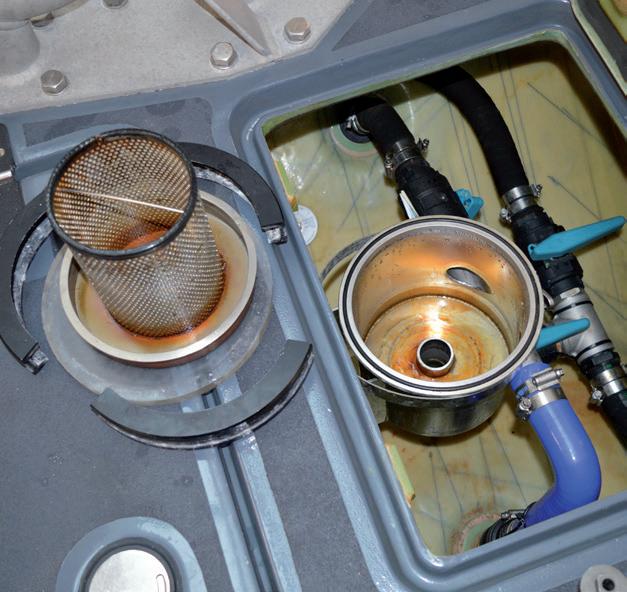

‘It’s really important that you keep your diesel tank full for as much of the time as possible, especially over the winter when the boat’s laid up,’ says Andy. ‘Otherwise, you can get condensation in the tank, which introduces water into the diesel system and causes engine failure. A water separating filter can also help prevent this.
‘The second problem happens mainly when your fuel or your tank is quite old and you get sediment in the bottom of the tank. Then if you go out on a roughish day and the diesel is slopping around in the tank, the sediment gets stirred up, gets sucked into the filters and blocks them, causing your engine to fail.
‘That’s quite difficult to fix at sea. It’s not impossible, if you’ve got spare filters onboard, but if there’s sediment in the tank, your new filters are just going to get blocked up again very quickly.

'
Prevention is better than cure, really, when it comes to your diesel system'Andy Wright, RNLI Area Lifesaving Manager The Scania diesel engines of a Shannon class lifeboat
‘Prevention is better than cure, really, when it comes to your diesel system. It’s about keeping your engine serviced. Make sure that your lift pump, injectors and injector pumps are in good order, as you can’t really fix them at sea.’



Again, filters are the first thing to keep on top of when it comes to your engine’s air system. ‘They won’t get as dirty as the air filter on a car will,’ says Andy, ‘but over time things will build up. And a blockage will restrict your air flow.’ Leading to – you guessed it –engine failure.
‘The other thing to look out for is a crushed exhaust hose. The hose is flexible, semi-rigid and out of the way, so it’s very easy to put something like a toolbox somewhere and crush it. That will create back pressure which, if it builds up, can cause your engine to fail.

' Keeping your diesel engine well serviced is essential. Also ensure that you complete engine checks before every voyage'
Andy Wright, RNLI Area Lifesaving ManagerComplete engine checks before every voyage Always have a set of spare parts onboard for your voyage, such as a water impeller (left)
Beautiful weather at the end of May drew pleasure-seekers out into Dublin Bay for a fun-filled weekend on the water. And Howth lifeboat crew were called out twice to boats with engine failure.



On Friday evening, a yacht with three people onboard on passage from Malahide to Howth lost engine power. The sails were up, but winds were light and it was slow progress. With darkness falling, the safest thing to do was tow the yacht into Howth.
Then, on Sunday morning, a passerby spotted a small motorboat in difficulty and drifting towards rocks just east of Howth Harbour. With onshore wind and breaking waves, this shows how a failed engine can be quite frightening.
The lifeboat was on scene in minutes, and the motorboaters had put out an anchor, which was holding them just off the rocks. The lifeboat crew were able to pull them out of danger.
Howth Helm Tom Ryan says: ‘The member of the public did the right thing in calling the Coast Guard straight away. When the winds are blowing onshore and a boat is broken down, every minute counts.
‘We would say to boat owners to ensure you’ve had the right training so that you’re prepared for when things go wrong. Take time to ensure your engine is well maintained, and make sure you have an anchor onboard and a means of calling for help in case you do get into difficulty.’
‘It’s a case of making sure you’re getting clean, unrestricted air going into the engine, and allowing exhaust and your raw cooling water to flow out freely through the exhaust pipe.’
Keeping these three systems working together in harmony should see you right. Have your engine serviced, your oil changed and your impellers replaced in line with the advice in your owner’s manual. Keep your diesel topped up, and carry easily replaced spares onboard. Andy advises: ‘Make sure you’ve got a couple of spare impellers, primary and secondary filters for the diesel system, a spare oil filter, oil, engine coolant and a spare alternator belt. Keep them in a
box and make sure you know where that box is. There’s nothing worse than knowing what the problem is, but not being able to find the right tool to fix it.’ Of course, the tools are no good if you don’t know how to use them. YouTube is great in the moment, but there’s nothing like hands-on learning. The RYA runs a 1-day Diesel Engine course, written in collaboration with the RNLI, where you can get stuck in on the essentials of engine maintenance and repair. Andy says: ‘You’ll get experience of changing filters and impellers, understanding how the diesel system works, adjusting alternator belts – all the practical things. It would be my top winter tip for anyone who goes to sea with an engine.’
Finally, it’s worth remembering that even with the best preparation and skill, the unexpected can and will happen. If your engine fails and you can’t get back underway, finding yourself without power or control in a shipping lane or drifting on to a lee shore, don’t be afraid to ask for help. Every lifeboat crew will tell you they’d rather get the call to launch before things get too dangerous. ■
Words: Mairéad Dwane
Photos: Luke Heritage, Howth Coast Guard, RNLI/(Aidan Murphy, Andy Parish, Barbara Szente, Howth, Tom Ryan)
HowthRNLI
bring in a broken-down motorboat
'
When the winds are blowing onshore and a boat is broken down, every minute counts.'
Tom RyanTom Ryan
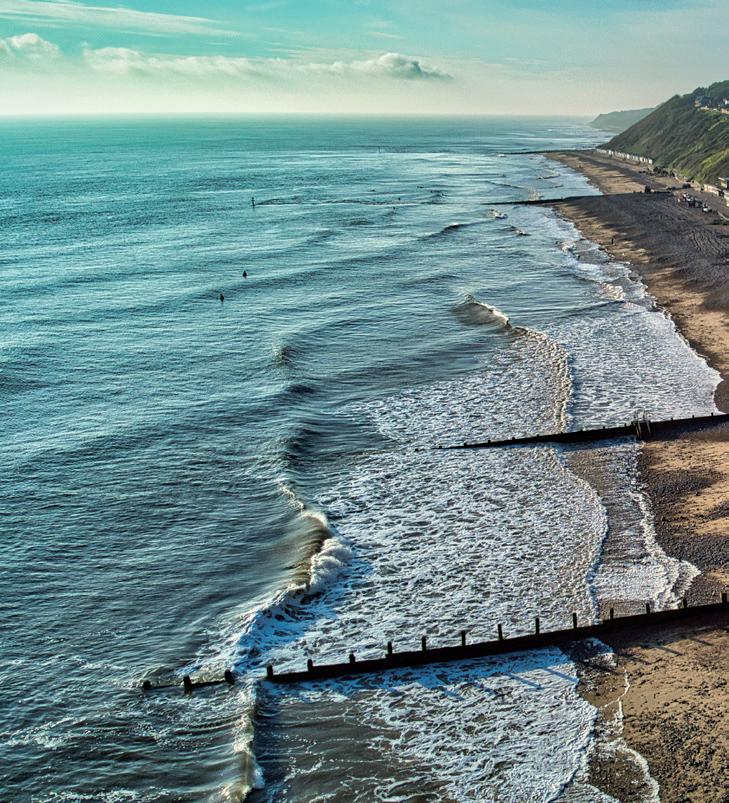
Cromer is famous for its beautiful beaches and big skies, Victorian architecture and iconic lifeboat station at the end of the pier. But what do the locals make of it?
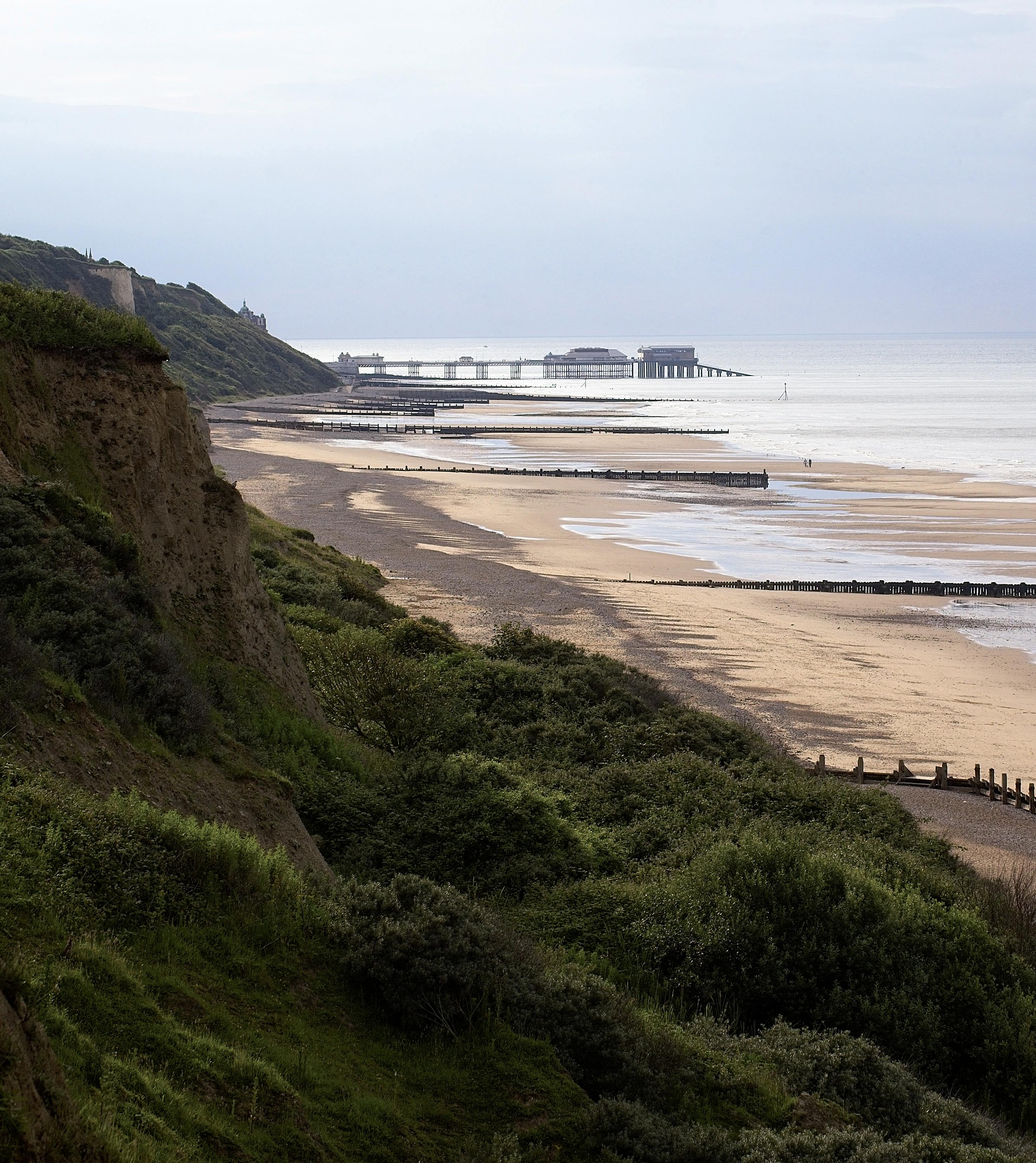
'YOU OFTEN HAVE THE BEACH TO YOURSELF HERE – IT'S A HIDDEN GEM'
‘This area is perfect for cold water dipping. I’m a member of Sheringham and North Norfolk Bluetits chill swimmers. You post each week if you’re hosting a swim. It’s great for meeting new people – we’ve had swimmers come from as far away as Blackpool and Lyme Regis. As well as the friendships you make, because you’re swiMming with other people, it’s safer too.
‘There are lots of lifeguarded beaches here and places where it’s easy to get into

the water at any state of the tide. The water stays quite shallow as you go out, although I’m careful to stay within my depth.
‘I’ve encountered seals a few times and the occasional swan. There are fishing boats on the beach between Sheringham and Cromer, so you have to watch out for those!
'I always check the conditions online before a swim, and check the local beach webcam. If it’s good for surfing it's likely to be bad for swimming! Once on the beach I will do a final check, especially in winter when the sea is much colder.’

‘My favourite beach walk is Sidestrand Beach between Cromer and Mundesley. There’s a ¾-mile stretch that’s clear of revetments and groynes. You often have the beach to yourself here. You could be anywhere in the world – it’s a hidden gem.’
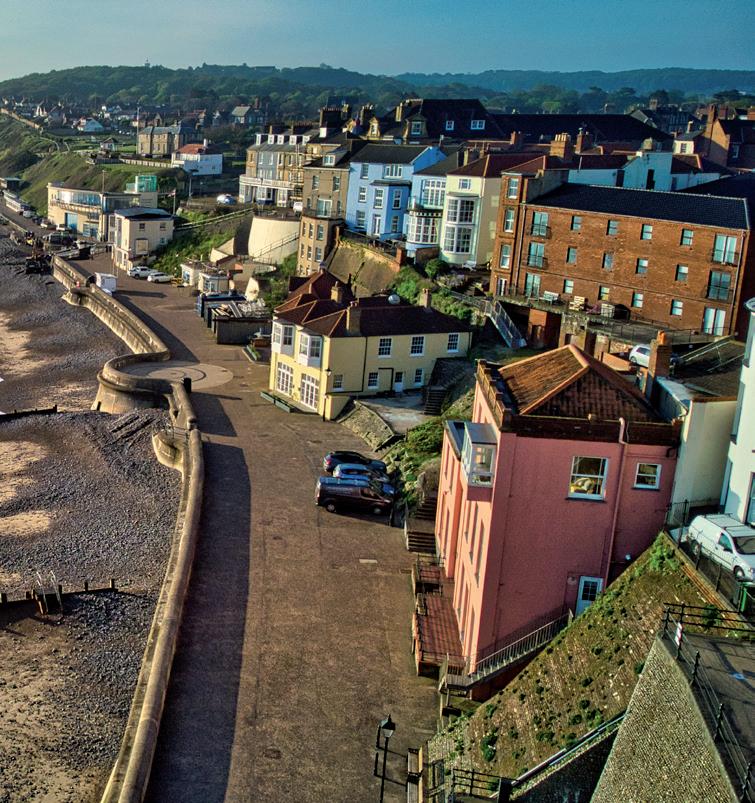
‘When you’re planning a day out, it’s best to know how far you’re walking and identify any areas, especially around sea defences, where you could be cut off by the tide.
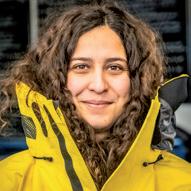
‘There are lots of fossils along our Deep History Coast. Famously, the skeleton of the world’s oldest and largest mammoth was found in cliffs at West Runton, and the earliest human footprints were discovered south of here at Happisburgh. The best place to hunt for fossils is on the beach or in rock pools. When you’re fossil hunting or walking on the beach it’s best to keep well away from the cliffs.

‘The Henry Blogg Museum details the history of lifeboats in Cromer. It’s very interactive, which is especially good if you’ve got kids with you and is great for a rainy day. We get plenty of those!’
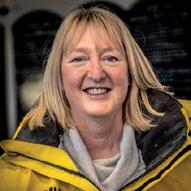
MARK SOUTHGATE SURF SHOP OWNER AND LIFEBOAT VOLUNTEER
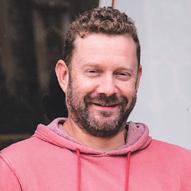
‘The sea is a gorgeous emerald green in the summer and the clear water is great for snorkelling and scuba diving. The chalk reef just offshore between Weybourne and Trimingham is a Site of Special Scientific Interest and home to the Cromer crab.
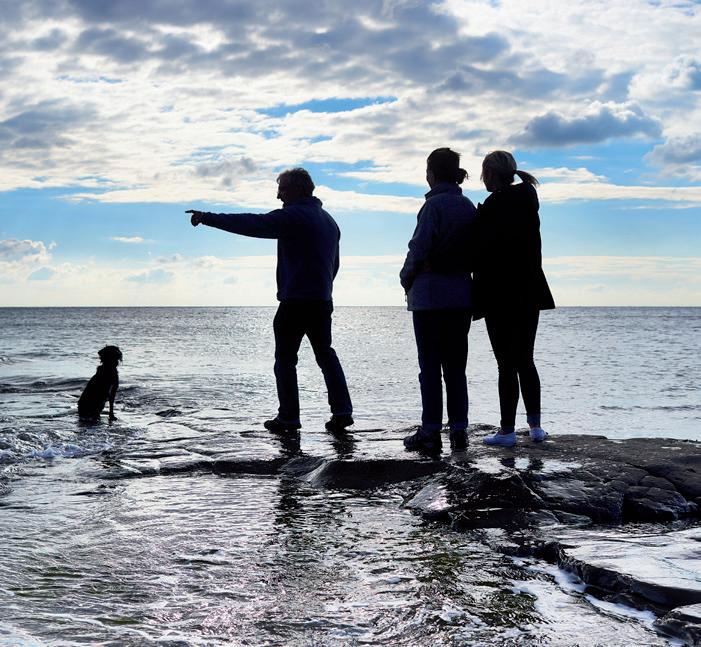
‘Cromer crab is unique because in winter the water is so cold. It’s quite small, which makes it tastier and sweeter than brown crabs found elsewhere. Davies’ Fish Shop sells the best crabs in town.’

‘When conditions are right, surfing is as good here as anywhere in Cornwall. But the surfing window is much smaller because we’re very reliant on tide, wind and swell direction. Generally, the best time to surf is 2 hours either side of high tide when there’s a swell from the north and an offshore wind blowing.
‘Kayaking is a big thing. And, if you have a sailing boat, the nearest harbours are at Blakeney and Wells-next-the-Sea. Neither of them are accessible at low water, which restricts what sailing you can do. Inland, the Norfolk Broads are fantastic for pleasure boating and paddling.’
FIND
visitnorthnorfolk.com surfline.com

eastcoastsurf.co.uk ■
Words: Rob Westcott
Photos: Simon Buck, RNLI/(Nigel Millard, Nathan Williams), Double Exposure Photographic, Shutterstock.com

TELL
Let
Mark’s surfing safety tips:
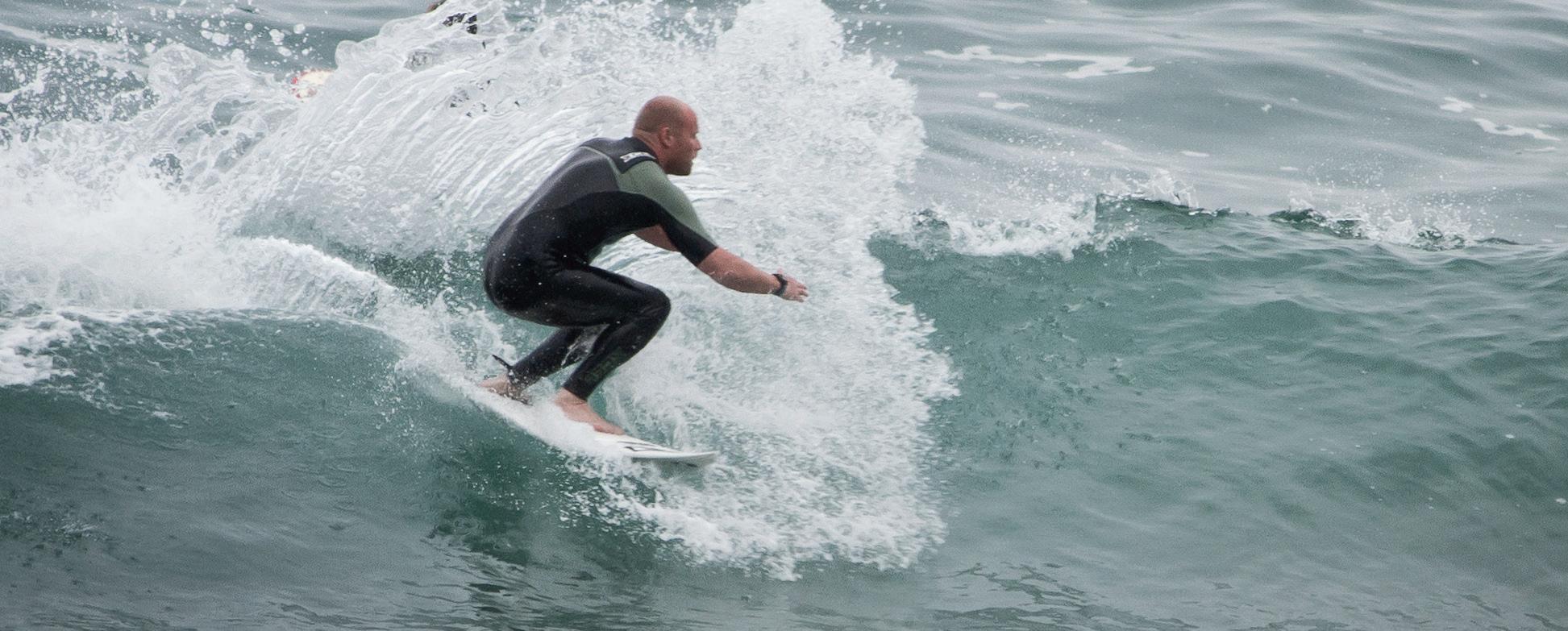

· Never surf alone.
· Keep between the black and white flags.
· Be aware of tides and rip currents – talk to a lifeguard.
· Always wear a leash. For more safety tips visit RNLI.org/surfing
‘… of the camaraderie in the town –we’re like a little country all on our own’
MARK SOUTHGATE CREW MEMBER, CROMER LIFEBOAT
‘… of long walks on the beach, after an oat latte from the North Sea Coffee Shop!'
FIONA KEENAGHAN TRAINEE CREW MEMBER, CROMER LIFEBOAT
‘… of swims in the sea and walks along the North Norfolk Coast Path, which is stunning!’
CLARE STAGG
VOLUNTEER LIFEBOAT PRESS OFFICER, CROMER LIFEBOAT STATION
I love where I live because...Family fun at Cromer Pier and Theatre Cromer offers some beautiful beach walks
'Surfing is as good here as anywhere in Cornwall'
Alistair McDonald was rescued by Berwick-upon-Tweed RNLI in September 2020 after his dinghy capsized while training for man overboard. He’s practised this scenario many times before in the River Tweed –but on this day, nothing was going to plan. Alistair shares his story
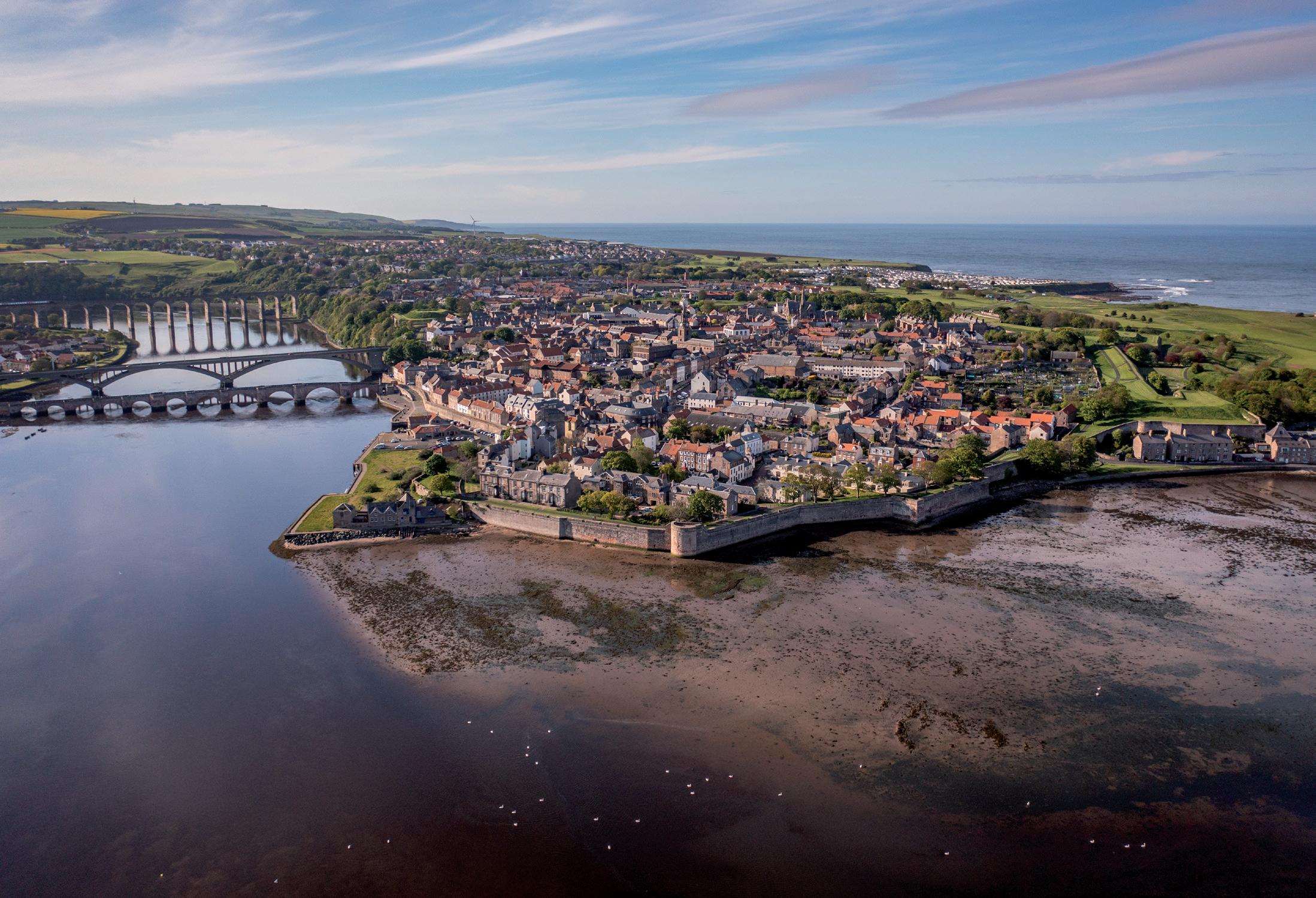

Man overboard is a well-practised routine for sailors – and, sometimes, a capsize happens as part of it. Concerned members of the public will raise the alarm as they don’t realise we’re just practising for a man overboard situation. And to avoid unnecessary RNLI call outs, I always arrange with the Coastguard not to launch a rescue without reaching me on the radio first.
On the fateful day in September, everything was going as usual in the training but, as I hauled myself back into the boat, she capsized. After several repeated attempts it became clear that something wasn't right. I was using the radio while I was in the water, but the Coastguard couldn't hear me.
30 minutes
The duration the casualty was in the water
Fortunately, Berwick-upon-Tweed RNLI were watching me from the boathouse and the crew decided to launch before the call out came. Thank goodness they did.
I lost consciousness and woke up in the ambulance. The cold pains and violent convulsive shivering were beyond anything I’ve ever experienced before – it was horrendous.
The crew are experienced in search and rescue, and a couple of them told me they thought I was dead. When I met the harbour master in town a couple of weeks later, he was shocked. 'You’re alive?!' he said in disbelief.
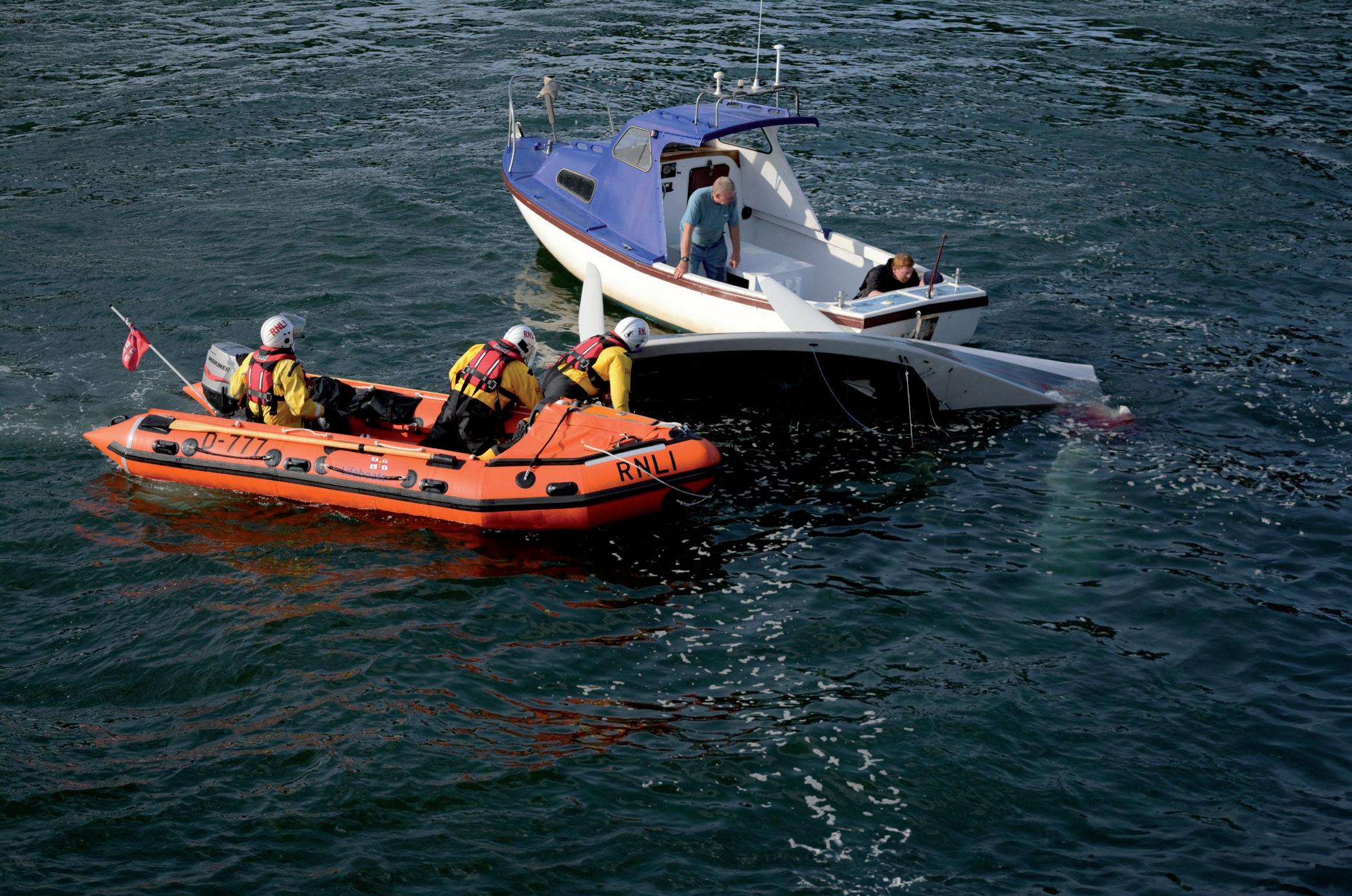
It was a very humbling experience to be rescued and it’s hard to find the right words to express what it meant to me. But in Scandinavia, and in the Outer Hebrides, there’s a saying: Tusen Tack. It literally means: A thousand thanks.
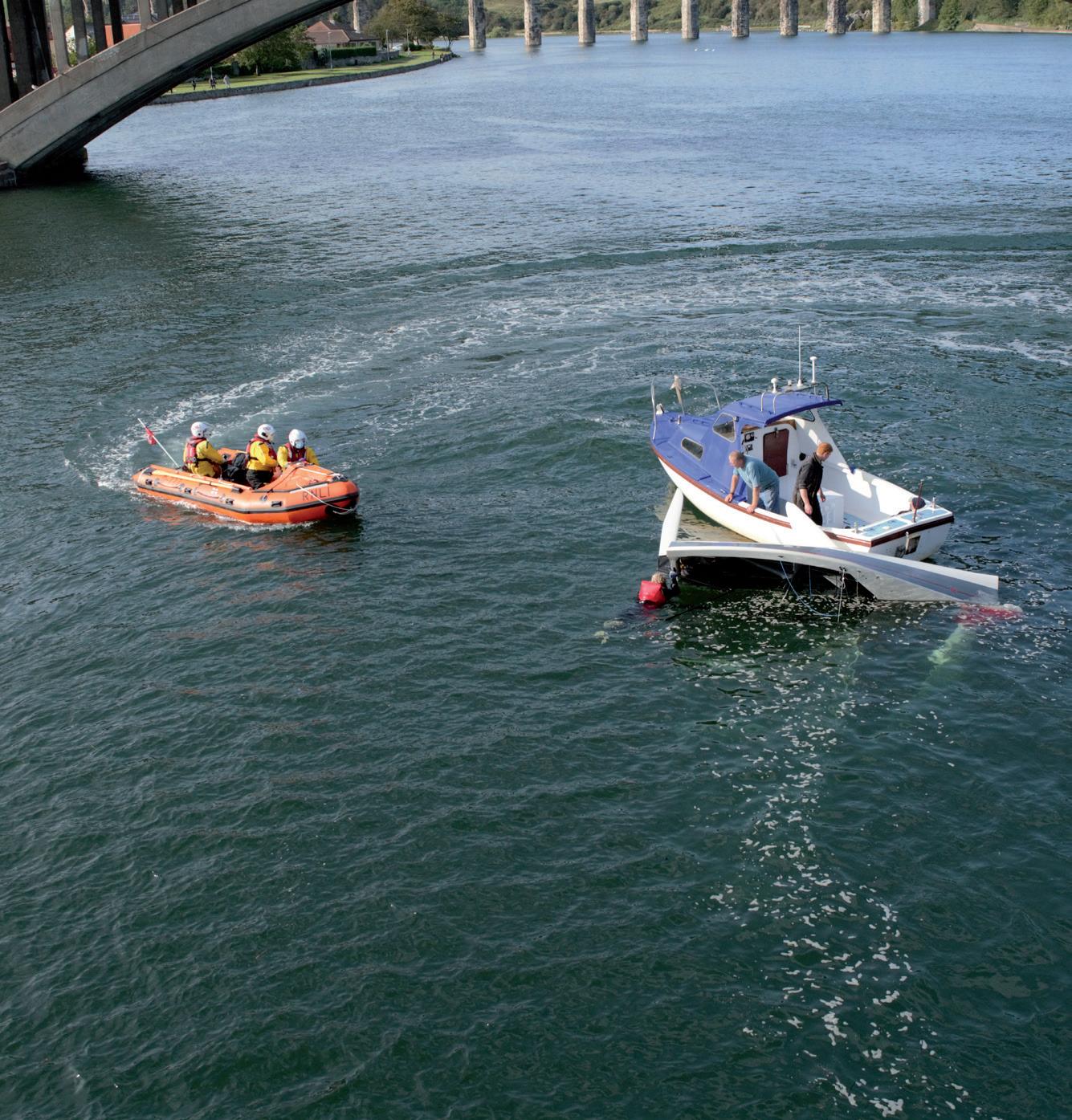
‘The RNLI were watching me from the boathouse and decided to launch before the call came. Thank goodness they did’
Alistair McDonald
‘ Everything was going as usual but, as I hauled myself back into the boat, she capsized. I was using the radio in the water, but the Coastguard couldn’t hear me’
‘Alistair was a very lucky man – in my 28 years of being involved with the RNLI, this was one of the closest scenarios I’ve seen to someone not pulling through. I can’t tell you what I did last week, but I will always remember that rescue.
‘As well as regularly practising capsize training, you need to be prepared for cold water shock by wearing the right kind of PPE like a lifejacket or flotation device. Train in a controlled, closed environment where there’s no danger of being swept out to sea and someone is likely to have eyes on you if things go wrong. If you’re part of a sailing club, it’s a good idea to practise with them and ensure a safety boat is out with you in case you should ever need help. And if you feel like you could be in trouble at any point, dial 999 or 112 and ask for the coastguard – don’t leave it for any significant amount of time.’ ■
SHARE YOUR STORY
BERWICK-UPON-TWEED
Berwick-upon-Tweed RNLI (main image) is stationed where the River
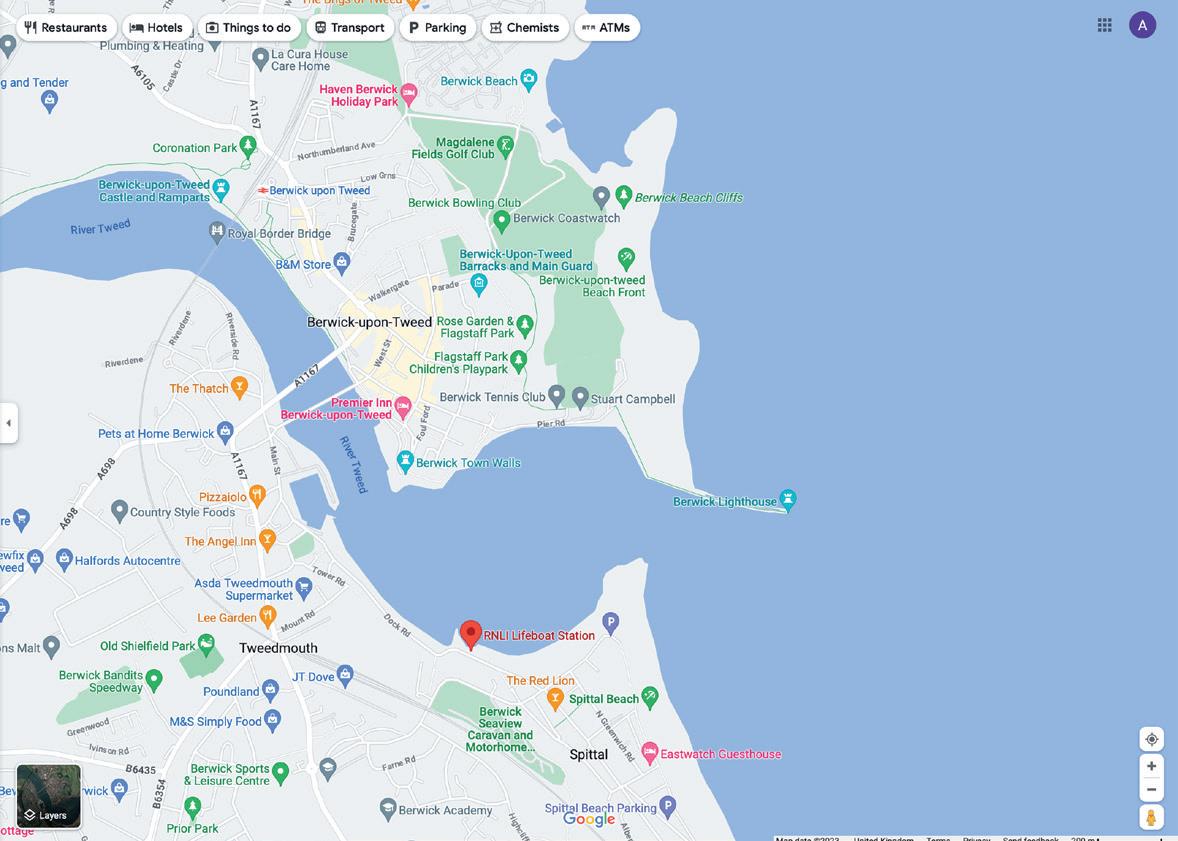

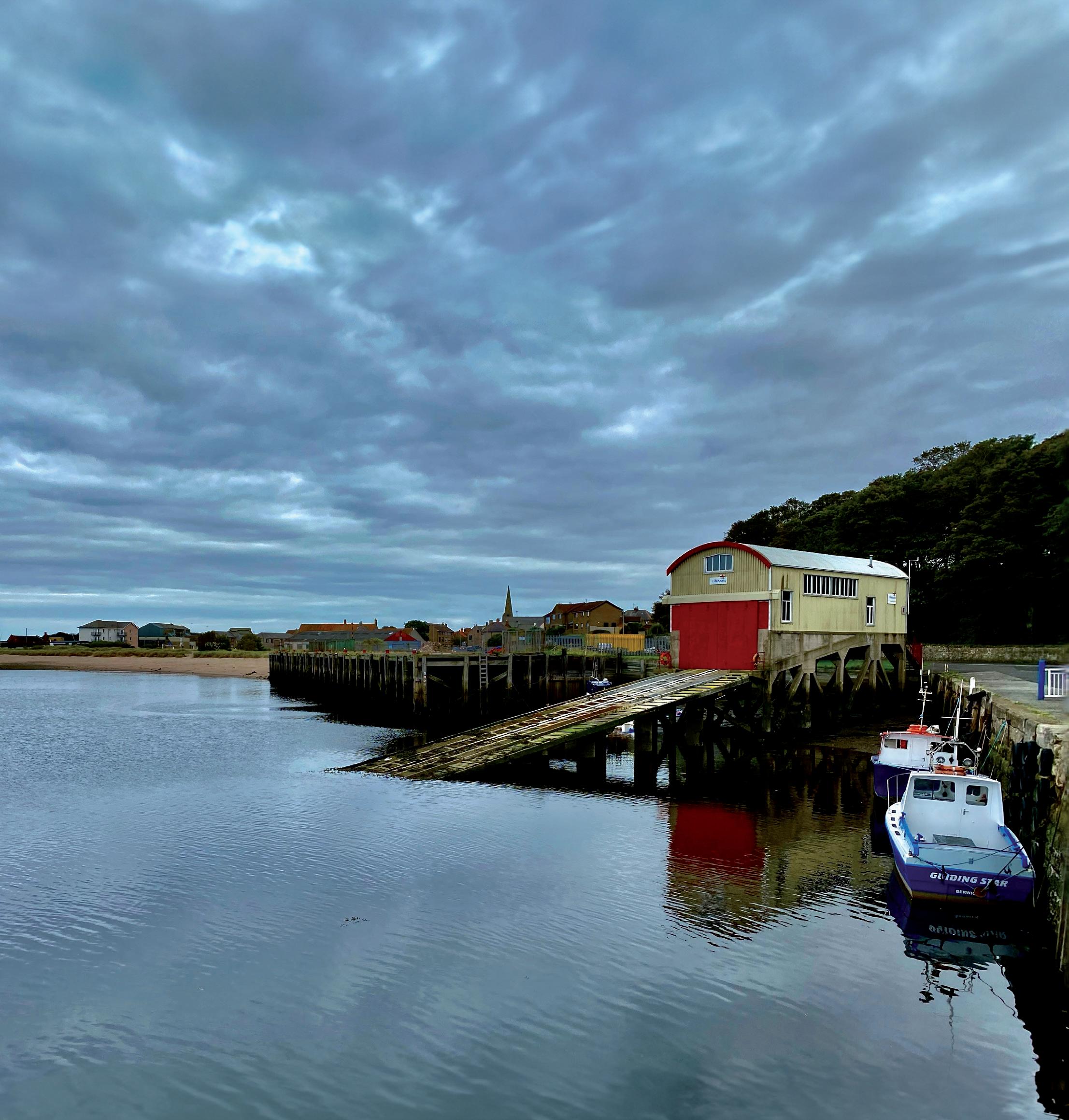
Tweed meets the North Sea
Words: Alistair McDonald, Jasmin Downs
Photos: McDonald family, Edward Hodgkiss, RNLI/(Berwick-upon-Tweed RNLI), Shutterstock.com
Offshore is a community to share our experiences and broaden our horizons. Do you have a story you can share about ways you’re advancing a watersport, or about a time things went wrong on the water? If so, please email offshore@rnli.org.uk
‘Practise man overboard in a controlled environment where someone is likely to have eyes on you’
KEVIN KNOX, LIFEBOAT OPERATIONS MANAGER AT BERWICK-UPON-TWEED RNLI
Autumn is a great time to get out on the water for all sorts of reasons, so here is some timely advice on how to prepare for your next day sail
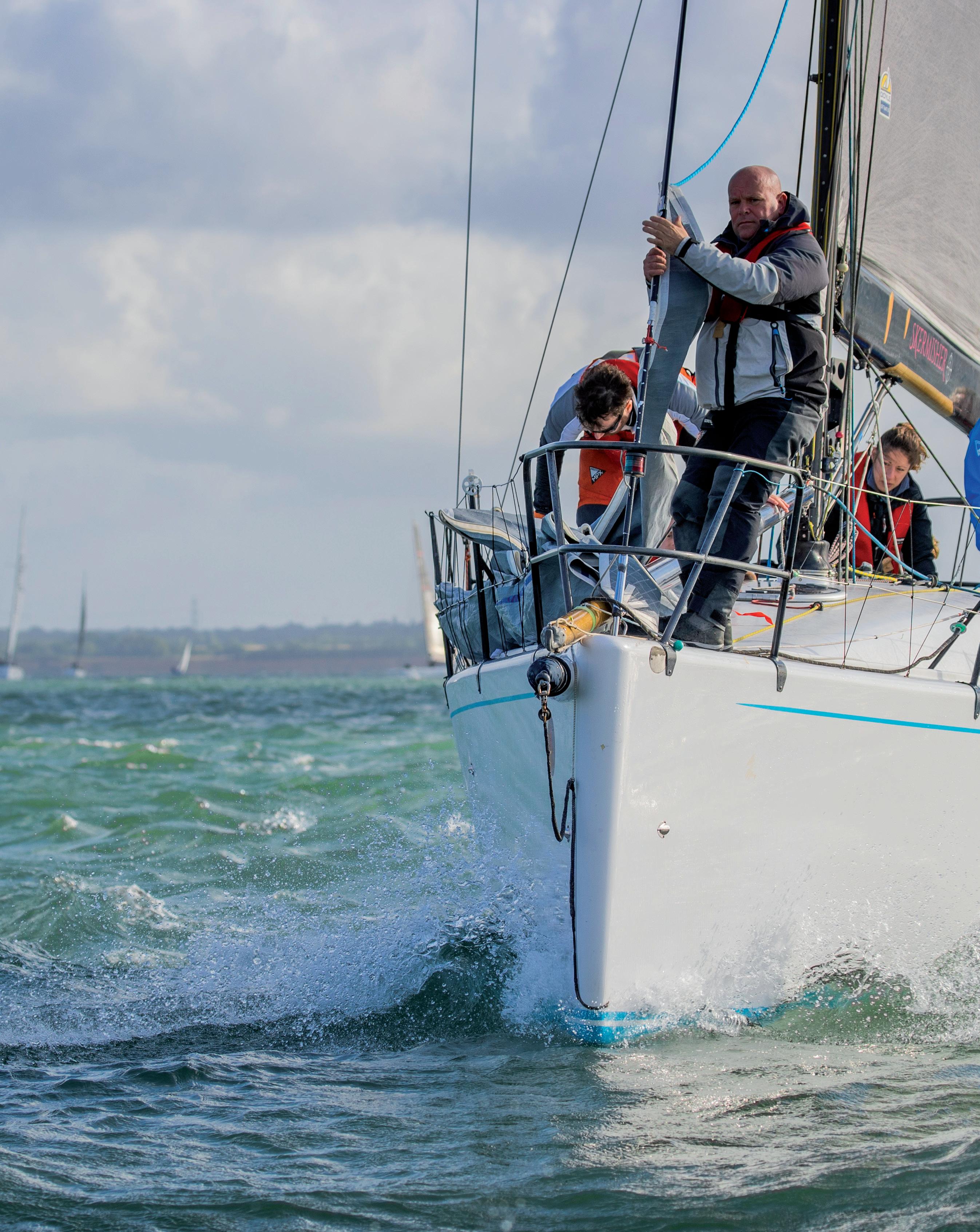
Bright, sunny days without the heat mean you don’t generally have to worry about the effects of sun stroke. Harbours and marinas may be quieter. Sea water temperatures tend to hold up, but air temperatures can drop.
Relatively settled weather, higher pressure and a warmer breeze from the south west also work in our favour. While winds can be strong, depressions are less likely at this time of year so winds tend to be more predictable.
Of course, you can never completely predict the weather, but what you can do is check weather forecasts regularly to make sure you don’t get caught out.

Adequate preparation for a day sail is vital, whether you sail a day boat or a cruiser. It’s similar to preparing for a long car journey. Do you know your route and how long it will take? Have you checked your tyres, oil, coolant and screen wash? Have you got enough fuel, food and water? What will you do if the car breaks down?
Sailing qualifications aren’t required for recreational sailing but RYA and Irish Sailing advice is to ensure you and your crew are properly trained – for example day skipper (theory and practical) – or have undertaken appropriate refresher training. If you carry an installed VHF radio onboard – and we recommend that you do – it is a legal requirement to obtain a VHF operator’s licence, for which you’ll need to do additional training.

Think about the training needs of you and your crew. This is especially important if you’ve not sailed for a while or if the boat is new to you. Courses to consider include day skipper and VHF operator’s licence.

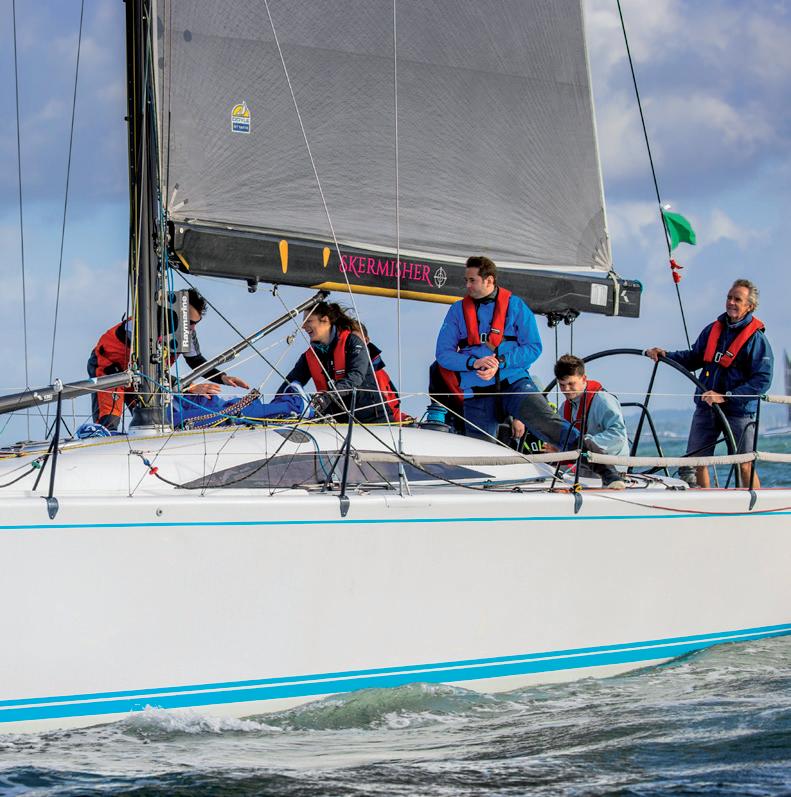
Assess the boat, your crew and the route. Ask yourself questions like: Is the boat suitable and is it working properly? Are there enough crew, and do they have the right experience and cold weather kit? Have I got the right charts and are they installed on the chart plotter?
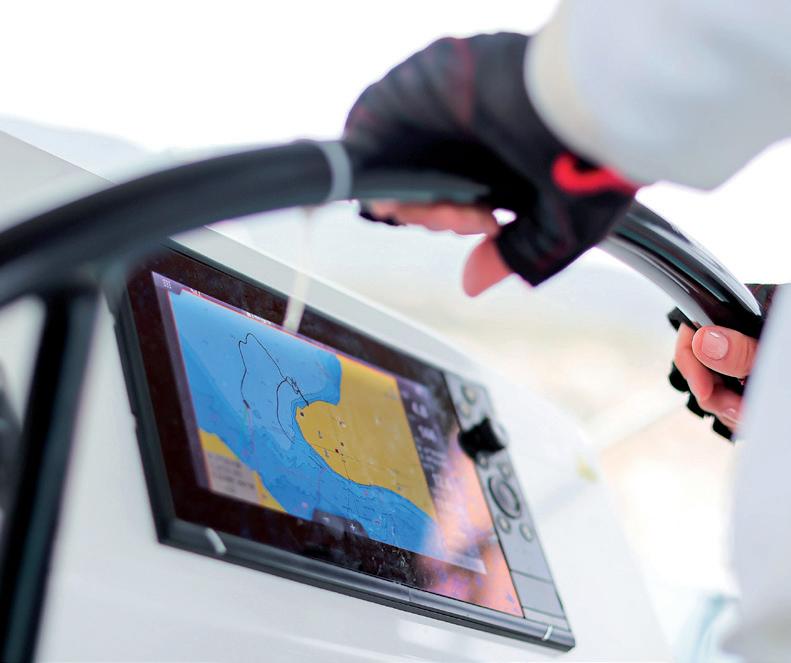
Think about the training needs of you and your crew
Look in detail at the tides, weather forecast, wind, route and pilotage, and know how to contact the harbour master at your destination. Think of everything that could go wrong and identify escape routes. Have a plan B and a plan C. Take a means of calling for help.
Check if anything has changed before you set sail, eg Are all the crew still available? Is the forecast the same? Has there been any recent rain that might affect water levels?
Inform someone of your plans, including your back-up plans, so that they can call for help if you get into trouble. Consider using the RYA SafeTrx app.
Monitor your progress once you’re underway. For example, if you’re not where you should be according to the chart plotter, do you need to resort to a back-up plan?

You’re walking around a harbour wall with a dog when the dog rushes over the side and into the water.
What do you do next?
Even if the drop from the wall to the water doesn’t look very steep, your dog will most likely be frightened after going over – especially if they realise they can’t get back up.
The water can be very fast flowing, cold, and there can be hidden dangers like rocks or pier infrastructure to contend with. So even though your intentions would be well-meaning for going after your dog (C), you could be putting both of you in further danger by attempting to rescue them yourself.
If you can find a safe space nearby that would help the dog make their own way back over the wall, head there and encourage them to come to you (A). But, if you have any doubt, your safest option is to call 999 or 112 and ask for the coastguard (B) –as a crew, we would much rather rescue your pet and bring them back to you rather than have you put yourself at risk.
launches to animals in 2022
Move to a place where the dog can get to safety and call for them – they will likely get out by themselves?
Call 999 or 112 and ask for the coastguard?

Quickly go after them to save the dog getting into further danger?
In February, the Kinghorn volunteers were paged to help bring a Red Fox Labrador called Callie to safety, after she fell from a 3m sea wall near Cockenzie Power Station, East Lothian. The crew had to carefully manoeuvre the lifeboat underneath the jetty which took great skill – and they found Callie, who was very scared and nervous, seeking shelter
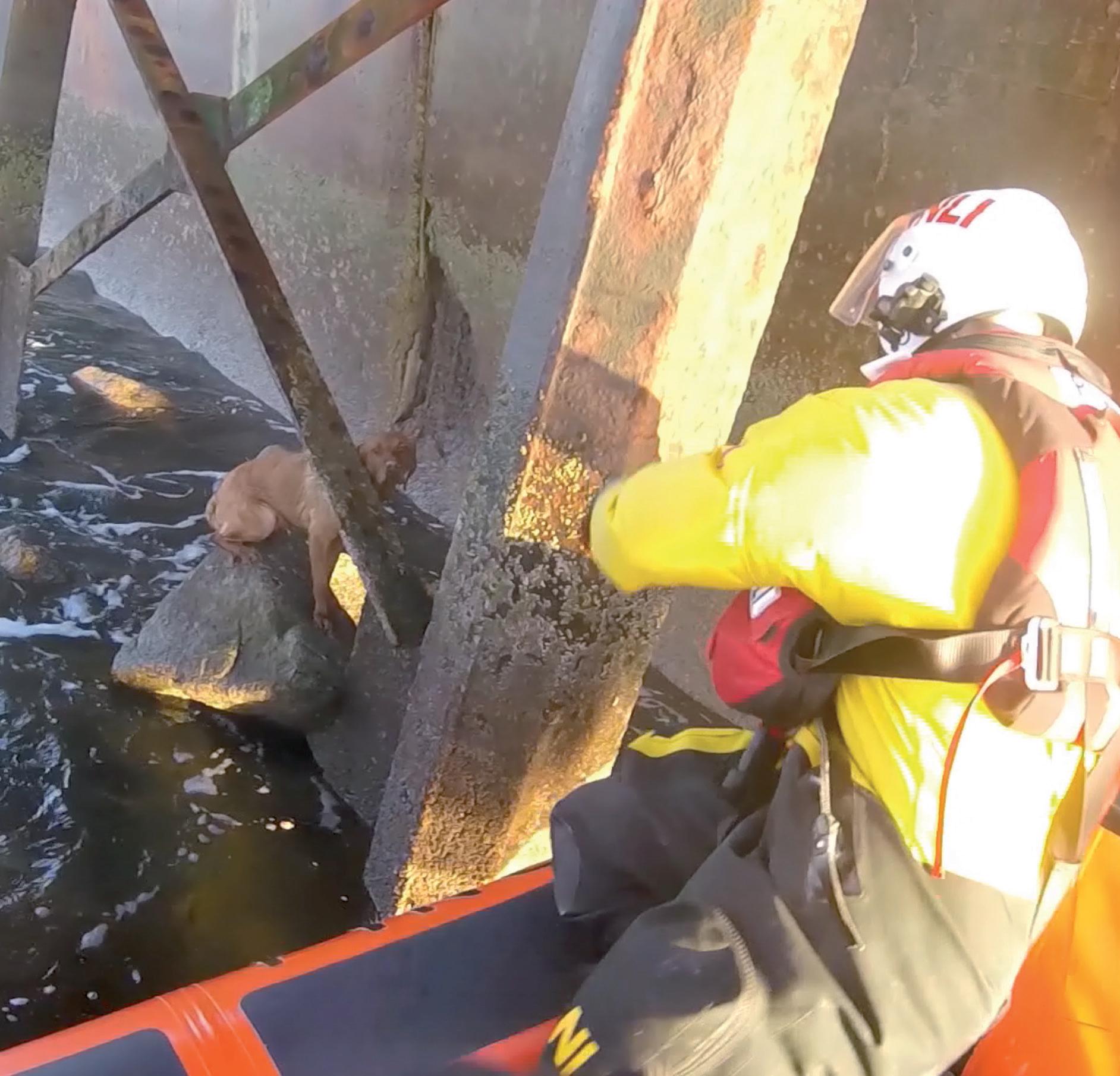
on a rock. She had suffered a slightly injured paw from her fall but was quickly pulled aboard by the crew and brought back to her grateful owners at Cockenzie Harbour. Lifeboat
Volunteer Neil Chalmers says: ‘Callie’s owners absolutely did the right thing by calling 999 and not endangering themselves. We were so pleased to reunite them.’ ■